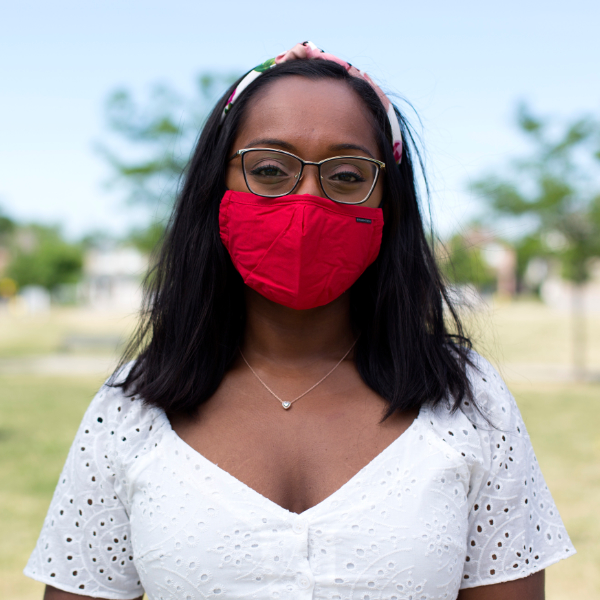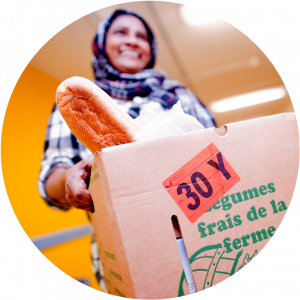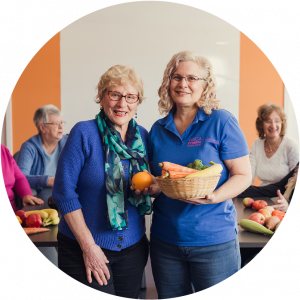The Issue
Most people who experience food insecurity are also struggling with other issues like poverty, unemployment or underemployment, lack of affordable housing, or disability. This includes many equity-deserving groups, such as women, households led by female lone parents, Indigenous or racialized households, and recent immigrants. Research shows that Black households are twice as likely to be food insecure as white households, indicating structural factors like racism are also determinants of food insecurity. This impacts entire neighbourhoods, shaping where and what kind of food is available, the cost of food, how it is distributed locally, and who is engaged in food initiatives. These factors make access to affordable and culturally relevant healthy food choices a challenge, particularly in low-income and racialized areas.
$700
Food costs are expected to increase approximately $700 on average, per family – this coming year
75%
of food bank clients reported that they began using the food bank as a direct result of the pandemic’s impact on their financial situation
2x
Black households are twice as likely to be food insecure as white households
How we help
We aim to transform communities into places with strong, vibrant and connected local food systems where all residents have access to culturally relevant and healthy food. Our approach is to focus on geographic communities with high food insecurity and to support initiatives that are working in a coordinated way with residents and different stakeholders. These partnerships collaborate to create food systems that relieve hunger and promote long term food security.

During the pandemic, some of our clients have seen increased food insecurity. Many of the families we work with have had at least one parent lose their job and, as a result, making ends meet has been difficult for them. Seeing this need in the community, we have created care packages in collaboration with various agencies to provide these families with biweekly supports of gift cards, food donations, and toiletries. We drop off these packages at their homes and have various staff located in different parts of York Region who drop off packages for a cluster of families. We are also constantly on the lookout for any partnerships or collaborations we can create to provide for more families.
Varenya, Families and Schools Together Program Manager, Family Services York Region
Here’s how your local love helped nourish and feed GTA residents last year:

23,491
Individuals accessed healthy and culturally appropriate food

7,266
Individuals increased their knowledge and skills related to healthy eating

34,619
Individuals who are experiencing homelessness or are at risk of homelessness obtained nutritional meals, and basic health and personal supplies
October 16, 2020
A neighbourhood lens on food security
Maybe you’ve heard the term ‘food desert,’ but what about ‘food swamp’? Here’s what that means—and why you might be living in one without even knowing it. Food insecurity doesn’t always look like you think.